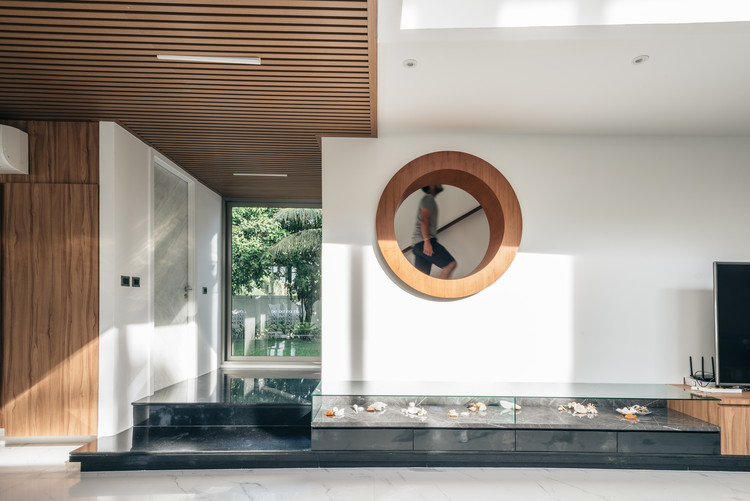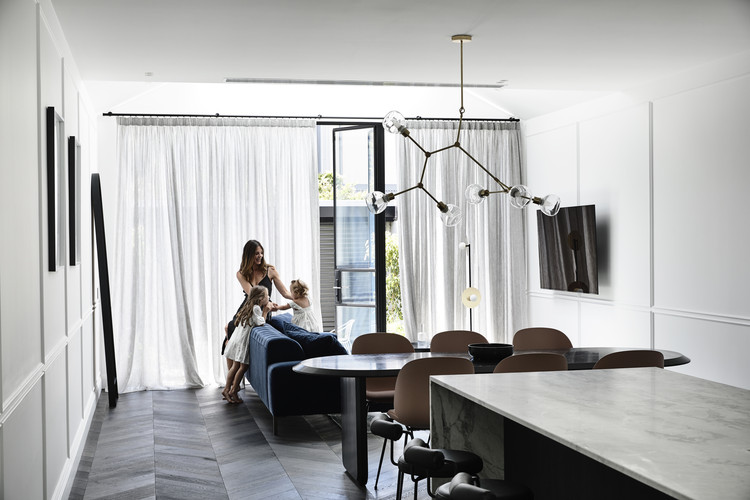Pt. Leo Estate Jolson Architecture and Interiors
2018-07-06 17:00
架构师提供的文本描述。PT LEO庄园是一座建筑,它探索结构混凝土设计的可能性,以创造雕塑形式,在一个创新的姿态中综合景观、艺术和建筑,以庆祝它的地方感和程序感。客户的愿景是与公众分享他们私人收藏的大型雕塑在海岸遗址,其中有一个成熟的葡萄园和全景海景。伴随着这一愿望的是热情好客的体验,庆祝他们的葡萄酒生产以及当地的产品。
Text description provided by the architects. Pt Leo Estate is a building that explores the possibilities of structural concrete design to create sculptural form that synthesizes landscape, art and architecture within an innovative gesture that celebrates its sense of place and program. The client’s vision was to share with the public their private collection of large-scale sculpture on a coastal site featuring an established vineyard and panoramic ocean views. Accompanying this was a desire for a hospitality experience that celebrated their wine production as well as local produce.
客户想要一座引人入胜的,令人回味的建筑,并与艺术界建立对话。它可以舒舒服服地坐在国际舞台上,同时仍然保持着一种澳大利亚人的身份,来庆祝它所处的语境环境。坐落在它的心脏和栖息在135公顷的农村麦里克的财产的最高海拔,公众在抵达后立即与葡萄园和真正的澳大利亚景观。
The client wanted a building that was engaging, evocative and that would establish a dialogue with the artistic community. It could comfortably sit on the international stage whilst still maintaining an Australian identity that celebrated its contextual environment. Purposefully located at its heart and perched on the highest elevation of the 135 hectare rural Merrick’s property, the public on arrival immediately engage with the vineyard and a truly Australian landscape.
根本的原则是景观、艺术和建筑之间的协同作用。前厅是一种雕塑姿态,是一种艺术体验。其曲线美的形式是对从瓶中倒出的葡萄酒和葡萄酒收获的有机循环的抽象解释。一个大胆的景观姿态和流动的墙壁表示敬意的弯曲英格国王的标志性雕塑位于前院的中心。
The underlying principle is the synergy between landscape, art and architecture. The forecourt is a sculptural gesture and an artistic experience. Its curvaceous form is an abstract interpretation of wine pouring from a bottle and the organic cycle of the wine harvest. A bold landscaped gesture and the fluid walls pay homage to the curvature of Inge King’s iconic sculpture located at the centre of the forecourt.
当你从前院过渡时,建造的形式从地面出现,挡住了延伸的葡萄园,隐藏了建筑方案和远处的景色。随着时间的推移,藤蔓的卷须将层叠在一起,以屏蔽和锚定建筑物,加强设计对场地和环境的反应。破碎的花岗岩前院表面,加上单瓶树的不对称放置,唤起了澳大利亚崎岖、侵蚀和破碎的景观。这棵树是前院内的一个活生生的雕塑物体。
As you transition through the forecourt the built form emerges from the ground, holding back the extended vineyard and concealing the building programme and views beyond. In time long tendrils of vine will cascade over to veil and anchor the building, reinforcing the designs response to site and context. The cracked granite forecourt surface, together with the asymmetrical placement of the single Bottle Tree is evocative of the Australian rugged, eroded and cracked landscape. The tree is a living sculptural object within the forecourt.
这座建筑的径向图来自前院,它组织和分隔了进入Arbour、Cella门这三个简略的区域。
The building’s radial plan, derived from the forecourt, organises and separates the three briefed zones of the Entry Arbour, Cellar Door & Restaurants. This sweeping form articulates each area without the need for walls or partitions within a large open space and results in an internal experience where the total building mass never reveals itself. In so, adhering to the client’s desire that each function operate concurrently with equal emphasis.
从内部和外部,建筑的简单线条似乎已经消失,这削弱了建筑形式的实际规模和感知,以及它与现场的关系。这种效果也为葡萄园、乡村和海岸景观提供了更多的场地线。雕塑公园本身围绕着建筑形式,在建筑、葡萄园或海洋之间创造了一种中介,展示了来自当地和国际艺术家的50多件雕塑。
From the inside and outside the simple lines of the building seem to fall away which diminishes the actual scale and perception of the built form and its relationship to the site. This effect also affords greater site lines to the vineyard, rural and costal views. The sculpture park itself wraps around the built form, creating an intermediary in the view between the architecture, vineyard or ocean and showcasing over 50 sculptures from local and international artists.
 举报
举报
别默默的看了,快登录帮我评论一下吧!:)
注册
登录
更多评论
相关文章
-

描边风设计中,最容易犯的8种问题分析
2018年走过了四分之一,LOGO设计趋势也清晰了LOGO设计
-

描边风设计中,最容易犯的8种问题分析
2018年走过了四分之一,LOGO设计趋势也清晰了LOGO设计
-

描边风设计中,最容易犯的8种问题分析
2018年走过了四分之一,LOGO设计趋势也清晰了LOGO设计













































































